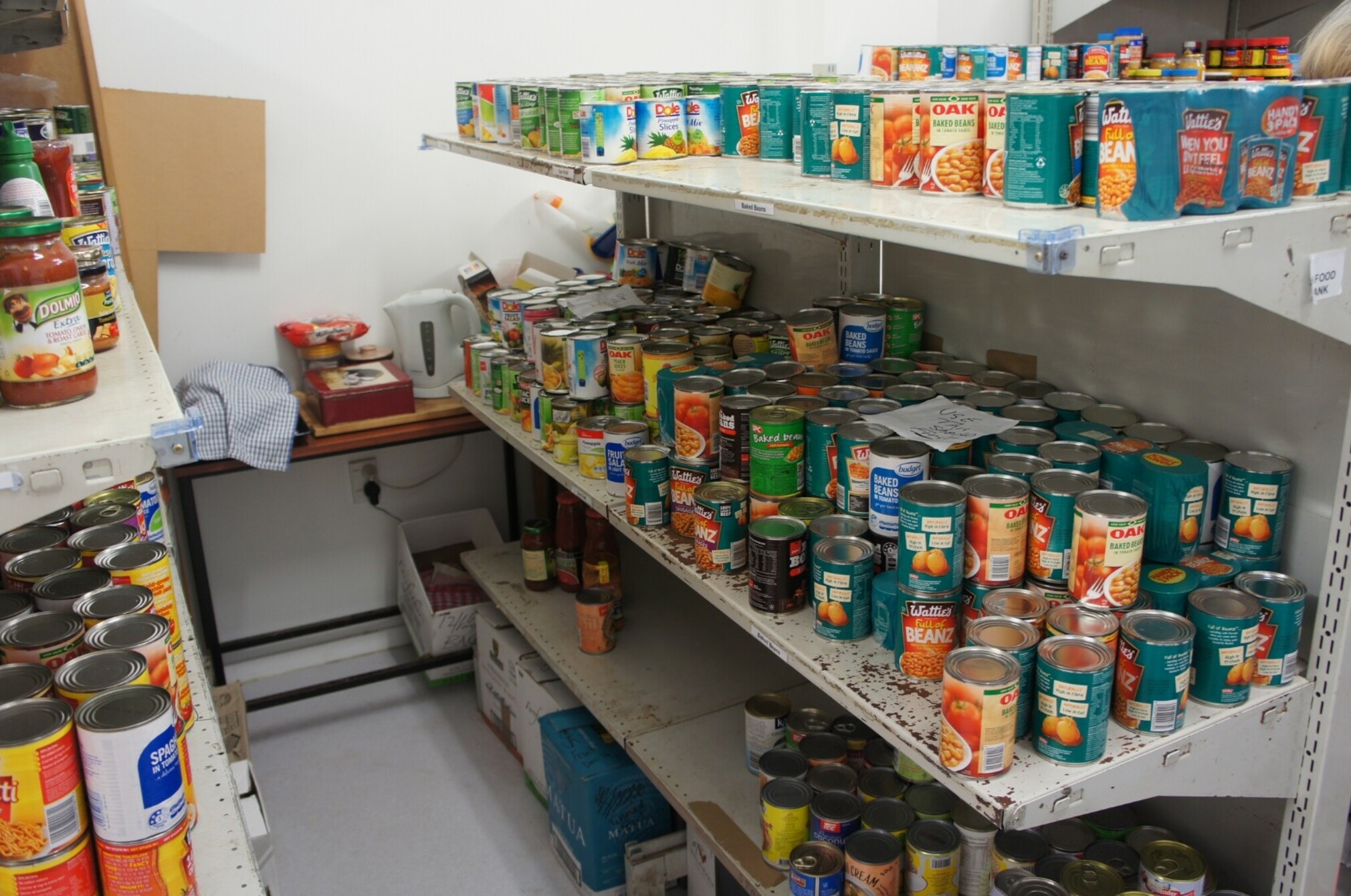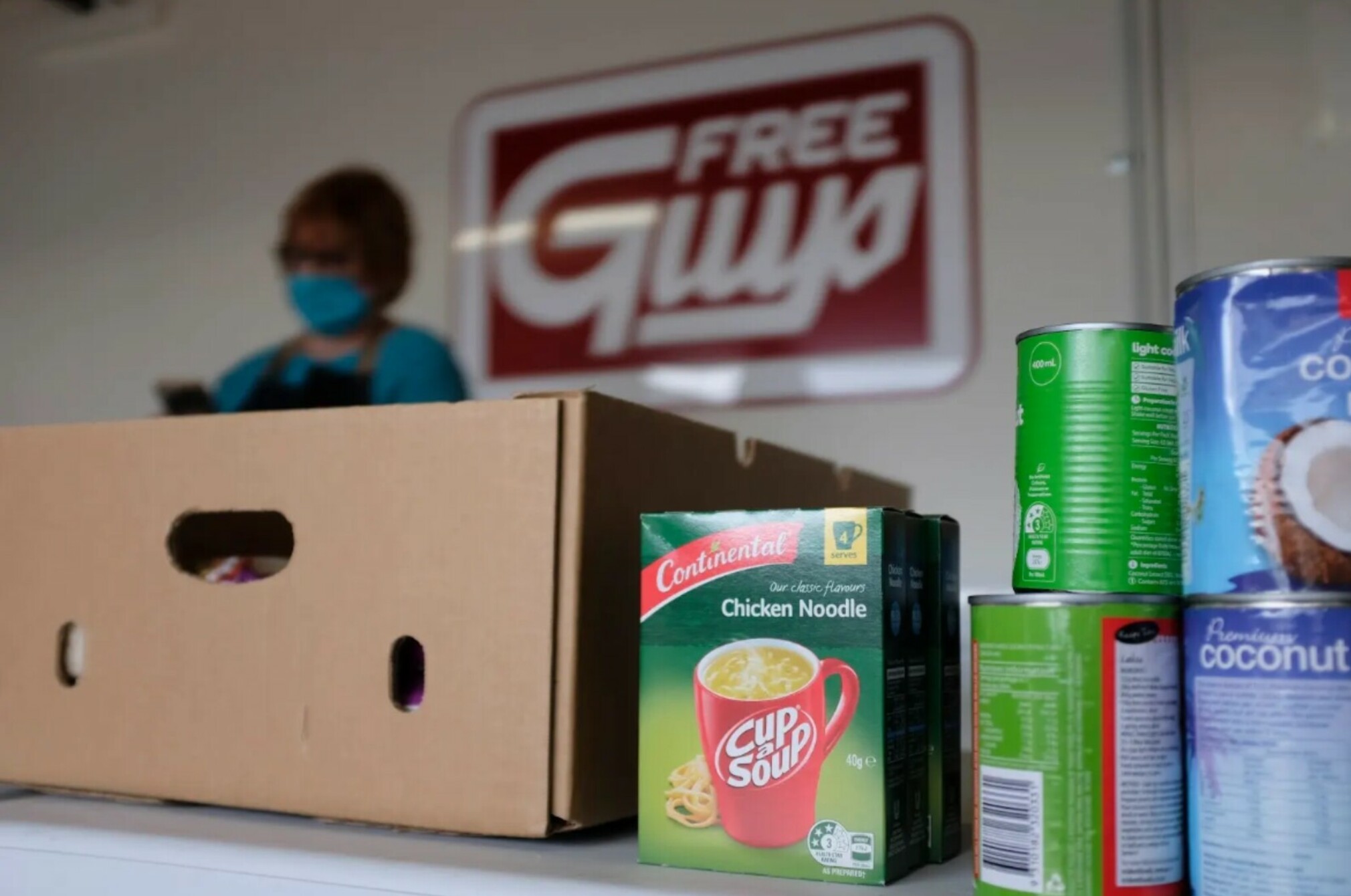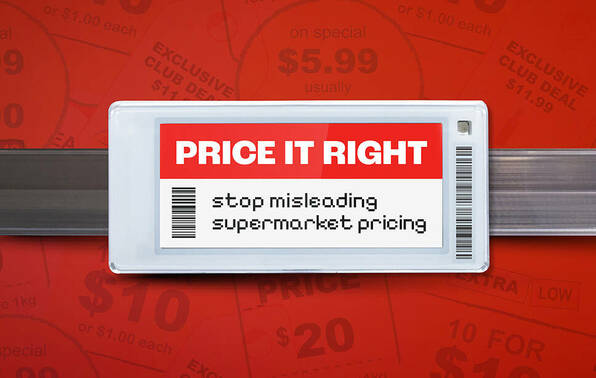A ‘growth’ industry – Food banks are struggling to keep up with demand

In Lower Hutt, things are getting desperate. “It’s really hard to keep up with demand,” says Antonia Haythornthwaite. The chairperson for the Lower Hutt Foodbank says she's seen a 22% increase in demand over the past 12 months.
“In April last year, we issued 1,158 parcels. This April, that figure had gone up to 1,415.” That many parcels, she estimates, would feed around 5,000 people. The parcels are going to individuals, couples and families struggling with food security and unable to put enough food on the table. But it’s not just an increase in the number of people needing support – it's how often they need help that’s growing too. “In the past, it was quite sporadic – every so often, they’d need help,” says Haythornthwaite. “That’s changed. Most of our customers visit every 15-30 days.”
That growing demand puts strain on the High Street foodbank’s resources – and their finances. When the economy is tight, and grocery prices are high, Haythornthwaite says demand for their services grows, but donations slow. “There is no funding for food banks, or certainly no guaranteed central funding, and so we rely on the generosity of the community,” she says. “And the amount of food and donations we get ... is reducing.”

So, the foodbank has had to scale back to meet demand. Like others spoken to for this story, it says it’s having to limit how much food each customer can get. "We used to be able to confidently say that we could provide enough food for three to four days. We've had to take that detail off our website," says Haythornthwaite. "Now, it's really just whatever we've got."
That's not all. Haythornthwaite says her food bank has always had a reserve of resources to rely on if things got tight. Things have gotten tight, and the food bank’s best-case time frame for its stockpile is less than 6 months. "The odds are against us," she says. "A year ago, we were spending around $15,000 a month [on food]. Now, we're spending about $25,000 a month."
Recently, a donor called to say she could no longer afford to contribute. She also said: "It's a possibility that I might have to become a customer." That, says Haythornthwaite, is a sign of the times. "A lot more customers are on minimum wage, or even middle-class people who have been impacted by redundancies. They all need help."
'We shouldn’t be a growing industry'
In a large kitchen out the back of a building on Great North Road, Auckland, Anne Riley is a whirlwind of action. She dumps cardboard into a recycling bin, leads me past a chiller – "The fridges are a bit lean" – and into a large pantry, where boxes are being packed full of food. It's here, at Kai Avondale (a community project run by the I Love Avondale Charitable Trust), where several hundred locals source their weekly food.
At this foodbank, Riley, supported by a team of volunteers, is in charge of sourcing the food, putting the boxes together, and often delivering them too. "Most of the parcels are a stop-gap," she says. She shows me a typical box, containing a loaf of bread, crackers, potatoes, onions, hummus and muesli; an assortment of what she calls “modest” goods. “People aren't coming to food banks and getting a week's worth of steak and mushrooms and cream sauce."
Riley’s only supposed to be working 40 hours a week, but demand is so high, she has lost count of how many she's doing at the moment. It could be as many as 60. "I'm here [almost] every day ... I don't have time to do anything else. It's just what the job requires," she says. “We shouldn’t be a growing industry.” Yet, no matter how she’s feeling, Riley gives everyone a grin. “Sometimes, it can get a bit much, [but] you will always see a smile no matter what is going on, just because it reassures everybody,” she says.

Riley’s working those kinds of hours, says I Love Avondale’s team lead Jaclyn Bonnici, because demand has skyrocketed. “We are giving parcels to 150-plus people a week,” she says. “For me, that’s huge. Being a growth industry is not something we’re super stoked with, but we know we're needed because the social safety net is badly frayed.”
Bonnici blames the expansion on a number of things: inflation, a cost-of-living crisis, stagnating benefits and benefit sanctions. She doesn’t like the language that portrays those in need as ‘ingrates’ and ‘bludgers’. “This kai goes out to hard working families, to older men living in appalling conditions in local boarding houses, and to transients,” she says. “I think it’s really cruel to zoom in and judge them. Some of the single mums we support forgo meals for their children.”
Like the Lower Hutt Foodbank, I Love Avondale struggles to get sufficient grants and donations. But Bonnici and Riley are reluctant to turn away anyone who asks for help. It is, they say, a community, their community, and as long as she can help, they’ll help. “We never have enough food,” Riley says, “but we rarely turn people away.”
What our supermarket and grocery surveys tell us about food security
According to Consumer NZ’s recent supermarket survey, a significant number of households are struggling to buy enough food or afford the types of food they prefer. As much as 30% of respondents said they'd needed assistance getting enough food to eat in the past 12 months, either from food banks or from family or friends. Another 10% said they needed this help often or very often.
When asked if they'd been forced to stretch their food budget, 43% responded that they "had enough food, but not always the kinds we want", 14% said "sometimes we don't have enough food" and 6% said “often we don't have enough food”. Another 37% reported regularly having to stretch out their food budget.
The survey comes as the cost-of-living remains high, and grocery prices continue to impact household budgets. Stats NZ said the food price index rose 3.7% in the 12 months ended April. That same month, Consumer's grocery survey revealed a strong public appetite for government action to improve access to affordable food. Many respondents called for clear and effective intervention by the government, while also expressing low confidence in its ability to deliver.
“New Zealanders are struggling to access quality food at affordable prices, and they’re not seeing meaningful change at the checkout,” says Consumer chief executive Jon Duffy. “Consumers want the government to take a harder line — not only in promoting competition but also in actively regulating how food prices are set and how promotions are run,” he says.
Consumers are increasingly turning to cost-saving strategies, such as shopping around and buying in bulk, to deal with rising food prices and growing pressure on household budgets. More than half of supermarket survey respondents said they compare prices across supermarkets – most commonly through supermarket websites or apps. This behaviour signals the need for unit pricing and easy price comparison across retailers.
But that's a luxury for those who can afford to buy groceries. As our interviews with food banks show, many are struggling to even afford the basics.
Is there any light at the end of the tunnel?
Salvation Army food security manager Sonya Cameron supports 72 food banks operating around the country. One of those is in Manukau City, where 50 allotted appointments for food support are available each day. Those appointments are booked online, and open twice a week. “Those appointments are being booked out within 15 minutes,” says Cameron. “We simply don't have the money anymore to meet the level of demand that we're seeing.”
Making things worse is the lack of funding. Cameron says Government funding has been scaled back over the past two years, resulting in the closure of other food banks around the country. Work and Income (WINZ) support has also tightened. “The money runs out, and then people have no other places to go apart from food banks,” she says. And as food banks close, “that puts more pressure on the remaining food banks.”
What would help? Cameron says the biggest issue is the lack of funding. “We’re looking for multi-year funding,” she says. “We’re always wondering whether any support we get is going to continue.” In the latest budget, the government announced financial support for food banks – but only until 30 June 2026. What happens after that, says Cameron, is anyone’s guess. “Many of the people and whānau we support are spending more like 70% to 90% of their income on rent and utility bills,” she says.
She calls the problems “systemic”. “What we would really like to see is the government looking more broadly at enabling people to access good, healthy food on a regular basis … rather than sending all our good food overseas.”
Haythornthwaite, from the Lower Hutt Food Bank, says a little can go a long way. “If everyone were able to give a little bit on a consistent basis, then that actually mounts up to a lot,” she says. “We say, ‘Could you give us $5 a week – the cost of a coffee?’” But she knows things are tight for everyone, and many budgets can’t currently stretch to that. “Everyone’s feeling it,” she says.
Where to get help
The New Zealand Foodbank Directory lists food bank services around the country.
Food Banks – The Salvation Army NZFTS also lists support services and options for those in a position to help.
Many suburbs, towns and cities have food bank support services – an online search can help you find one close to you.
Work and Income – Food explains how WINZ can provide help to pay for food if you’re on a low income or benefit.
Food distributors like Kiwi Harvest and Fair Food help support food banks and could also use help.

Sign the petition to make supermarkets price it right
Supermarket pricing errors are widespread and another blow to people’s budgets. Find out about our campaign to tell the government we need clear rules, stronger penalties and automatic compensation for shoppers when supermarkets get it wrong.
Member comments
Get access to comment